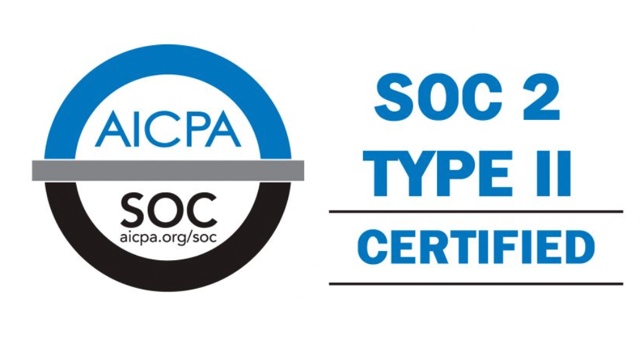
From 100 to 1 million Transfers: Scaling MFT for Enterprise Growth
From 100 to 1 million Transfers: Scaling MFT for Enterprise Growth Ever wondered what happens when your daily file transfers multiply by
You can use the docker run command to install the Sterling B2B Integrator Docker container.
You must complete all the prerequisite tasks specified. For more information, see Prerequisites for installing Sterling B2B Integrator Docker container.
If you are creating adapter containers, you must install IBM MQ before you create the adapter containers. You must also configure the properties for IBM MQ in the setup.cfg file. For more information, see Configuring the B2Bi container.
Ensure that the following items are saved on each node.
Note: All items must be saved in the same folder <local dir>.
For information about Docker deployment parameters, see Docker deployment parameters.
You can add a non-root user to the Sterling B2B Integrator Docker image.
The Sterling B2B Integrator Docker image comes with a default non-root user with name/uid as b2biuser/1010 respectively.
By default, the Docker container starts the Sterling B2B Integrator application services with the b2biuser. This user also owns the mapped trace folder.
Note: For the default user in the Docker container to be able to access the configurations and resources from the host folder path mapped to /ibm/resources, all the folders in that path should have an execute ‘x’ permission and all the files should have a read ‘r’ permission for others.
Follow these steps to install the Sterling B2B Integrator Docker container with the currently logged in user or any other user on the host:
1. Copy the contents shown below to a file named as Dockerfile and place it on a host that has Docker installed.
FROM b2bi:latest
ARG USER_ID
ARG GROUP_ID
USER root
RUN if [ ${USER_ID:-0} -ne 0 ] && [ ${GROUP_ID:-0} -ne 0 ]; then \
userdel -f b2biuser && \
if getent group b2bigroup ; then groupdel b2bigroup ; fi && \
groupadd -g ${GROUP_ID} b2bigroup && \
useradd -r -u ${USER_ID} -m -s /sbin/nologin -c "B2BI user" -g b2bigroup b2biuser && \
install -d -m 0755 -o b2biuser -g b2bigroup /home/b2biuser && \
chown --silent --no-dereference --recursive \
--from=1010:1010 ${USER_ID}:${GROUP_ID} \
/home/b2biuser \
/ibm/ && \
chown -R ${USER_ID}:${GROUP_ID} /ibm/trace \
;fi
USER b2biuser
2. Edit the Dockerfile to change the repository and tag name from b2bi:latest to the appropriate repository and tag name for the Sterling B2B Integrator image you downloaded.
3. Run the following command to extend the Sterling B2B Integrator Docker image to include the host user:
docker build -t ${desired tag}:${product version} --build-arg USER_ID=${host user id} --build-arg GROUP_ID=${host user group id} ${path/to/dockerfile}
Note: The build arguments host_user_id and host_user_group_id should be the uids for the selected host user and group.
4. Use the new Docker image id/tag as the <image-id> in all the subsequent Docker installation commands.
1. If you are installing the first node of a cluster or if you are installing in a non-clustered environment, run the following command to set up Sterling B2B Integrator1. :
For Host network:
docker run -e LICENSE="accept" -e KEY=<key> -e TZ=<Time Zone> -d --name=<container name> --net=host
-v <local dir>:/ibm/resources <image-id> b2bi_run all 1
For more information about parameters, see Docker deployment parameters.
2. If you are installing the additional nodes of a cluster, run the following command to set up Sterling B2B Integrator:
For Host network:
docker run -e LICENSE="accept" -e KEY=<key> -e TZ=<Time Zone> -d --name=<container name> --net=host
-v <local dir>:/ibm/resources <image-id> b2bi_run all <nodenumber>
1. If you are installing the first node of a cluster, run the following command to set up Sterling B2B Integrator:
For Overlay network:
docker run -e LICENSE="accept" -e KEY=<key> -e TZ=<Time Zone> -d --name=<container name>
--net=<name of the overlay network> --ip=<IP address> --hostname="<hostname>"
-p <port range> -v <path to setup.cfg>:/ibm/resources <image-id> b2bi_run all 1
For more information about other parameters, see Docker deployment parameters.
2. If you are installing the additional nodes of a cluster, run the following command to set up Sterling B2B Integrator:
For Overlay network:
docker run -e LICENSE="accept" -e KEY=<key> -e TZ=<Time Zone> -d --name=<container name>
--net=<name of the overlay network> --ip=<IP address> --hostname="<hostname>"
-p <port range> -v <path to setup.cfg>:/ibm/resources <image-id> b2bi_run all <nodenumber>
If you are using vertical clusters, ensure that all nodes have separate ports and they are added to the setup.cfg file for each node.
1. If you are installing the first node of a cluster, run the following command to set up Sterling B2B Integrator:
For vertical clusters with port mapping:
docker run -e LICENSE="accept" -e KEY=<key> -e TZ=<Time Zone> -d --name=<container name>
--net=<network name> -p <port range 1> -v <path to setup.cfg for node 1>:/ibm/resources
<image-id> b2bi_run all 1
For more information about other parameters, see Docker deployment parameters.
2. If you are installing the additional nodes of a cluster, run the following command to set up Sterling B2B Integrator:
For vertical clusters with port mapping:
docker run -e LICENSE="accept" -e KEY=<key> -e TZ=<Time Zone> -d --name=<container name>
--net=<network name> -p <port range n> -v <path to setup.cfg for node n>:/ibm/resources
<image-id> b2bi_run all <nodenumber>
If you are using vertical clusters, ensure that all nodes have separate ports and they are added to the setup.cfg file for each node.
1. If you are installing the first node of a cluster, run the following command to set up Sterling B2B Integrator:
For vertical clusters with Host Network:
docker run -e LICENSE="accept" -e KEY=<key> -e TZ=<Time Zone> -d --name=<container name>
--net=host -v <path to setup.cfg for node 1>:/ibm/resources
<image-id> b2bi_run all 1
For more information about other parameters, see Docker deployment parameters.
2. If you are installing the additional nodes of a cluster, run the following command to set up Sterling B2B Integrator:
For vertical clusters with Host Network:
docker run -e LICENSE="accept" -e KEY=<key> -e TZ=<Time Zone> -d --name=<container name>
--net=host -v <path to setup.cfg for node 2>:/ibm/resources
<image-id> b2bi_run all <nodenumber>
1. To view the logs, use the following commands:
docker logs <container ID>
To view incremental logs, use:
docker logs -f <container ID>
Browse categories

From 100 to 1 million Transfers: Scaling MFT for Enterprise Growth Ever wondered what happens when your daily file transfers multiply by

In today’s fast-paced world of data analytics and AI, optimizing your data infrastructure is key to unlocking valuable insights and driving innovation.

In today’s fast-paced world of data analytics and AI, optimizing your data infrastructure is key to unlocking valuable insights and driving innovation.
We are a forward-thinking technology services provider dedicated to driving innovation and transformation across industries.


| Cookie | Duration | Description |
|---|---|---|
| cookielawinfo-checkbox-analytics | 11 months | This cookie is set by GDPR Cookie Consent plugin. The cookie is used to store the user consent for the cookies in the category "Analytics". |
| cookielawinfo-checkbox-functional | 11 months | The cookie is set by GDPR cookie consent to record the user consent for the cookies in the category "Functional". |
| cookielawinfo-checkbox-necessary | 11 months | This cookie is set by GDPR Cookie Consent plugin. The cookies is used to store the user consent for the cookies in the category "Necessary". |
| cookielawinfo-checkbox-others | 11 months | This cookie is set by GDPR Cookie Consent plugin. The cookie is used to store the user consent for the cookies in the category "Other. |
| cookielawinfo-checkbox-performance | 11 months | This cookie is set by GDPR Cookie Consent plugin. The cookie is used to store the user consent for the cookies in the category "Performance". |
| viewed_cookie_policy | 11 months | The cookie is set by the GDPR Cookie Consent plugin and is used to store whether or not user has consented to the use of cookies. It does not store any personal data. |
Thank you for submitting your details.
For more information, Download the PDF.
Thank you for registering for the conference ! Our team will confirm your registration shortly.
Invite and share the event with your colleagues
IBM Partner Engagement Manager Standard is the right solution
addressing the following business challenges
IBM Partner Engagement Manager Standard is the right solution
addressing the following business challenges
IBM Partner Engagement Manager Standard is the right solution
addressing the following business challenges